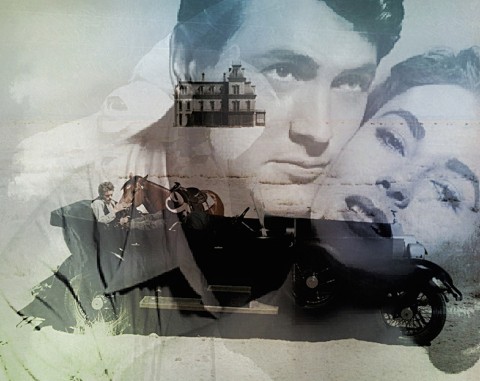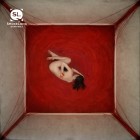“A victory is not over until you turn it into words.”
—Tino Villanueva
There’s a diner that has all of the south in it, run by a man named Sarge. Rock Hudson and Elizabeth Taylor come in, and with them comes the brown girl their son married and the child they had together who looks just like your baby pictures. Sarge comes over to inspect the child, suggests that instead of ice cream, maybe he wants a tamolly, and for a while it’s not clear who has the upper hand.
Yada yada yada, A rollicking fistfight ensues, fun for the whole family but—twist ending—Sarge, menacing in his brimless paper hat, lays Rock Hudson low, reminds him via visual clue and convenient close up that he reserves the right to refuse service to anyone.
You are watching this scene from the movie Giant in your Chicano Studies class, watching it because someone braver than you has already asked what it meant to be brown and watch Rock Hudson lose a fist fight for our honor. Three years before you’re born, thirty years after this film was made your father and mother are asked to leave a Denny’s in Tyler, Texas because they don’t get a lot of that around here and it’s nothing personal they just don’t want any trouble. You keep watching.
It’s the next scene, and we’re back at the Benedict ranch. Rock Hudson has a black eye and an oil canvas the size of my apartment. Here among his liquor and his leather sofas he is trying really hard to have an epiphany. To help with that, both of his grandchildren, the potential tamolly enthusiast from earlier and a new one, blond headed and blue-eyed, are in a playpen together, and penned up with them are two goats, one white one black. It’s not a symbol, it’s an indoor petting zoo. Bick Benedict stares out at his progeny and his chattel and declares, “You really want to know what’s gotten my goat? (Get it.) My own grandson doesn’t even look like one of us. He really looks like a little wetback.”
At this the child screams. And you scream too, right out loud in class in front of your professor and the women’s studies majors and everybody. You scream because Rock Hudson has the same look that your grandfather did when he said, “Well at least they’re getting whiter,” as he held your baby brother. It’s the same look that Mexicans have when they tell you that you look Chinese, the same look that everyone gets when they ask without a trace of guilt in their voice, “What tribe are you?” All of them, Rock Hudson most of all, would like you to know, “Sorry INSERT YOUR NAME HERE, there’s times when a man just has to be honest.”
Honest that blood is thicker than water but no thicker than the notblack hair that will always mark you as equal parts notwhite and notmexican. Honest that Jordan Benedict IV will inherit only what his grandfather wills to him, and that the right to eat ice cream/tamales at the venues of his choice will not be listed in the probate. That a migrant worker’s lifespan later, we white people still do not know how to deal with us brown people and none of y’all can figure out us halfbreeds.
The movie ends like this. Bick Benedict is still having trouble convincing himself that he won the fight he lost. Liz Taylor climbs into his lap and explains how she loves him more now than ever. Rock looks right at the camera and says, “Don’t women say the darndest things?” and then fade to black. Jordan Benedict IV never stops screaming.
That other guy, the one who talked about Rock Hudson’s ass-kicking and the tios and the tias who ended up taking their shapeless hats and their perfectly good money elsewhere, he found some hope at the end, or at least you think he did—the last poem’s in Spanish. And so you wish that you had a woman to say the darndest things, or a goat or two to help it all come together.
Instead all you got is that scream.



 The SmokeLong Grand Micro Contest (The Mikey) is now an annual competition celebrating and compensating the best micro fiction and nonfiction online.
The SmokeLong Grand Micro Contest (The Mikey) is now an annual competition celebrating and compensating the best micro fiction and nonfiction online.